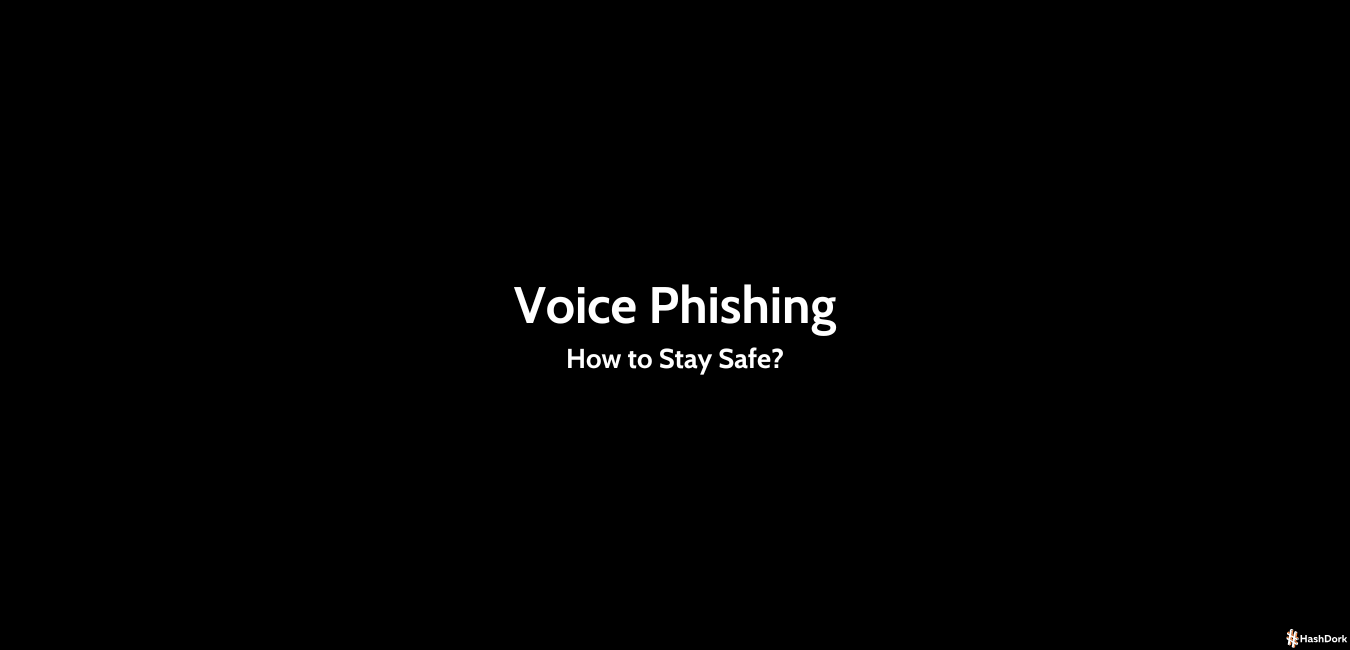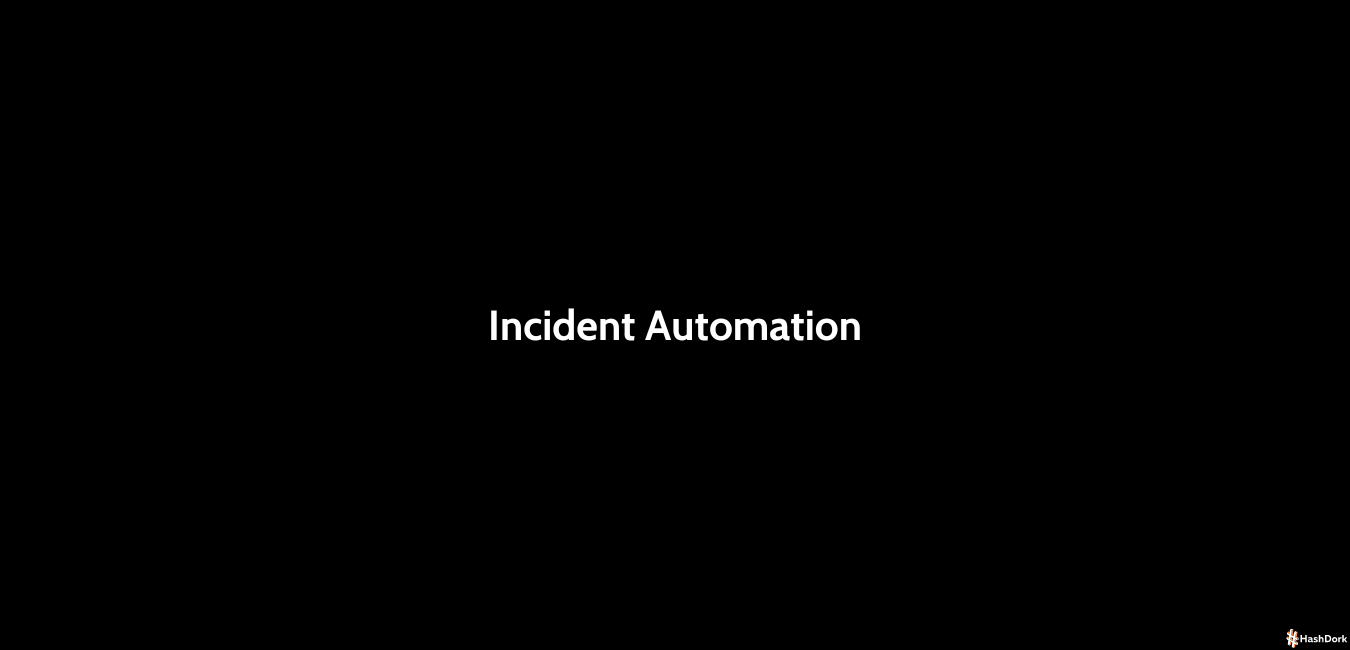Table of Contents[Hide][Show]
Voice Phishing – How does it work and how to stay safe
Voice phishing, or “vishing,” was an increasing threat in 2023, and 94% of firms reported encountering a phishing attempt. So, in this post, we will look at voice phishing, its importance it, how it works, the technologies behind it, and much more.
What is Voice Phishing?
Vishing, which is a combination of the words “voice” and “phishing,” is when scammers call or leave voice notes to get private information like login keys, credit card numbers, or bank account information from people.
To gain credibility, these attackers frequently imitate trustworthy institutions such as banks, government agencies, or renowned enterprises.
They might use strategies like “caller ID spoofing” to make it look like the call is from a real person or business.
The main goal is to use the victim’s trust or fear to get them to give up private information that can be used to steal their name or make money.
Vishing is a powerful form of social engineering because it uses real people’s voices to trick people, unlike standard hacking which uses emails or text messages.
Importance of Understanding Vishing in Cybersecurity
Over $5.4 billion was lost worldwide in 2023 due to phishing attacks, which included voice phishing (vishing).
Cybercriminals frequently assume the identity of reputable organizations, such as banks or government institutions, to get sensitive information.
Caller ID faking is one way they make it look like real calls, which makes it hard for people to spot fake calls.
The development of AI has made it harder to spot scams because they can now copy sounds and lie more effectively.
The effects are very bad, causing people and businesses to lose money, have their identities stolen, and hurt their reputations.
Understanding vishing is important for putting in place good cybersecurity means and raising knowledge about these dangers.
Mechanisms of Vishing Attacks
Caller ID Spoofing
Attackers hide who they really are by faking caller ID, which makes it look like their calls are from real companies like banks or the government.
They do this by using software to show fake phone numbers and business names on caller ID systems.
This strategy makes victims believe you right away, which makes it more likely that you can get private information from them.
People who are spoofing can also be tricked into returning missed calls, where they will unknowingly be talking to scams.
People and businesses fall for these tricks all the time, especially when they are busy and not paying attention.
Spoofing can be avoided by being aware of it and taking steps to make sure it’s real, like calling the group directly using confirmed contact information.
Social Engineering Tactics
Social engineering is the practice of influencing emotions in order to circumvent rational reasoning. When phishing, attackers often use fear or a sense of haste to get their targets to move quickly.
They might say your bank account is in danger or demand that you pay fake fines right away. In other cases, they try to get people to help them by saying they are a charity that needs help badly.
Scam victims feel rushed to act without checking first, so they make snap choices that help the scammer. To fight these strategies, you need to understand them.
It is always important to check claims, no matter how important they seem.
Use of Pre-Recorded Messages and Robocalls
Scammers are using pre-recorded texts and robocalls more and more to reach a lot of people. The people who make these calls use lines that sound real, like saying they are from the IRS or tech help.
A lot of people are easy for scammers to reach every day because of automated systems. Often, these texts have hints like “Press 1 for help” that connect people to a real scammer.
Many people fall for these tricks because the texts sound professional and the speaker seems trustworthy. Screen out unknown numbers and use call-blocking tools to avoid answering robocalls.
Exploitation of Publicly Available Information
Scammers use public records, social media sites, and groups to find personal information about people. They use these details to make their threats feel more personal, which makes their calls seem real.
For instance, if the speaker talks about a recent trip or your job, it can help you trust them. This strategy works because it fits with the victim’s world and makes them less suspicious.
To keep yourself safe, limit the personal information you share online and change your social media protection settings. If you want to avoid being scammed, you need to know how your digital record can be used against you.
Common Vishing Scenarios
Banking Fraud Alerts
A lot of the time, scammers pretend to be bank employees and tell people that their accounts have been hacked. They could say that deals were made without permission or that the account is at risk.
These people ask for private data like account numbers, PINs, or online banking login information in order to “fix” the problem.
When this happens, they may tell the target to send money to a “secure” account that the scammer controls. These tricks take advantage of the victim’s faith in their bank and their fear of losing money.
It’s important to remember that real banks will never call you and ask for private information. If you get this kind of call, hang up and call your bank directly using their official number to make sure the claim is true.
Tech Support Scams
In tech support scams, scammers pretend to be technical support reps from real companies and tell victims that their device has malware on it or major mistakes.
They might use technical terms to sound trustworthy and make the target feel like they need to move right away.
They often ask to “fix” the problem by directly accessing the victim’s computer, which lets them put software on it or steal personal data.
On the other hand, they could demand payment for their services, which would mean losing money. Remember that real tech companies don’t call you out of the blue to offer help.
If you get this kind of call, don’t give them online access or your payment information. Instead, call the company’s official customer service number to make sure any claims are true.
Government Agency Impersonation
Scammers pretend to be from the government, like the IRS or the police and say that the victim owes money in taxes or fines and needs to pay right away.
To get people to comply quickly, they will often threaten legal action, such as deportation or arrest. You might think these calls are real because the official agency’s number is shown on the caller ID.
Government agencies usually talk to each other through official emails.
They won’t demand instant payment over the phone or threaten to arrest people who don’t follow the rules. Do not give out any personal information or make payments if you get this kind of call.
Instead, hang up and use official contact information to call the agency directly to make sure the claim is true.
Family Emergency Scams
Voice cloning has made it possible for scammers to pretend to be family members who are in trouble.
In these situations, the target gets a call from someone who sounds like a family member and says they need money right away because of an emergency.
People may act without checking first because of the sense of haste and emotional trickery.
To be safe, you should always make sure the caller is who they say they are by asking questions that only the real person would know or by calling the family member directly on a number you know.
Be wary of people who ask you for money without asking, especially if they want to pay you with something unusual, like a wire transfer or a gift card.
Tech Behind Vishing
Voice Over Internet Protocol (VoIP)
Voice Over Internet Protocol (VoIP) technology lets you make phone calls over the internet. This is a flexible and inexpensive way to talk to people.
Attackers have used the same technology, though, to carry out vishing strikes. Callers can hide their real names with VoIP, which makes calls impossible to track and makes it easier to fake a caller ID so that the number shown looks like it’s from a trusted source.
Also, VoIP systems can automatically make and forward a lot of calls quickly, which makes it easy for attackers to reach a lot of possible victims. VoIP is built on the internet, which makes it hard for police to find and arrest criminals because they can work from anywhere in the world.
People and businesses should be wary of calls they didn’t ask for and think about using VoIP security measures like encryption and caller authentication methods to lower these risks.
AI and Voice Cloning
Modern AI has enabled the creation of very accurate voice cloning technology that can imitate human speech with pinpoint precision.
Attackers can make their scams seem more real by using AI-powered voice cloning to imitate the sounds of people they trust, like family members or company leaders.
This method has been used in different stages of an attack, such as initial entry and lateral movement, which makes it a powerful tool for social engineering.
Voice cloning and deepfakes, for example, have been used by crooks to steal large amounts of money from businesses.
AI voice copy tools are becoming easier to get, which increases the threat because anyone, even those who aren’t very tech-savvy, can do believable vishing attacks.
To stay safe from these kinds of threats, it’s important to check the name of callers through multiple routes and not trust requests for private information that come from out of the blue.
Caller ID Spoofing Tools
Caller ID faking changes the information that shows up on the other person’s caller ID to hide who is calling.
Attackers use easily accessible software to change caller ID information so it looks like the call is coming from a real company, like a bank or the government.
This trick makes it more likely that the target will answer the phone and believe the caller, which could lead to them giving out private information.
The Federal Communications Commission (FCC) has recognized that caller ID spoofing is often used in scams, stressing the need for customers to be aware and careful.
People should be careful of calls they didn’t ask for that ask for personal information, and they might want to use call-blocking services that can find and stop fake calls to help solve the problem.
Identifying Vishing Attempts
Unsolicited Calls Requesting Personal Information
A big red flag is getting calls out of the blue from people who want to know private information like Social Security numbers or bank account information.
Legitimate organizations don’t usually call people to ask for personal information. For example, a woman in Alabama lost $35,000 when trick artists pretending to be government officials got her to give them such information.
Avoid giving out personal information when you don’t want to during unwanted calls, and use official methods to make sure the caller is who they say they are.
Urgency and Threats
Threats or a sense of urgency are common ways that scammers get people to act right away. They might say that if you don’t follow their rules, bad things will happen, like getting sued or having your account shut down.
This strategy is meant to get around your ability to make a smart choice. It’s important to be aware of these pressure methods; real businesses don’t use threats to get people to do what they want.
If you get these kinds of requests, stay cool and take the time to make sure the call is real.
Requests for Unusual Payment Methods
Be cautious of callers who want to be paid in unusual ways, like with gift cards, wire transfers, or cryptocurrency. Businesses and government bodies that are legitimate do not ask for money through these methods.
For instance, scammers might tell people to put money into a Coinstar machine, which is what happened to a person who lost $3,000. If someone asks for money in a way that isn’t normal, you should always question and check it.
Inconsistencies in Caller Information
Keep an eye out for any problems with the caller’s story or qualifications. Inconsistencies, like wrong pronunciations, job titles, or processes that aren’t known, can be a sign of a vishing attempt.
Scammers may also use fake caller IDs to look like real people, but small mistakes can show that they are lying.
If something doesn’t feel right or doesn’t fit with what you already know, go with your gut and check the information before moving forward.
Preventative Measures Against Vishing
Verification of Caller Identity
Always be sure to independently validate the identity of a caller by utilizing official contact information.
This will ensure that the caller is legitimate. For instance, if someone indicates that they are representing your bank, you should immediately hang up and call the customer support line of your bank.
The caller ID can be fake, therefore you shouldn’t rely on it. Scammers can also be caught by asking specific questions about the group.
Legitimate groups will never complain if you check their references before giving them private information.
Education and Awareness
A strong defense is teaching people how to recognize vishing attacks. People can learn to spot tricks like putting pressure on someone, making threats, or asking for money in strange ways through training programs.
Regular campaigns to raise knowledge help possible targets stay alert. Real-life scams should be shared by organizations to show how vishing works.
People who are well-informed are much less likely to be scammed by social engineers.
Implementation of Call Filtering Technologies
Vishing attempts are less likely to succeed when you use call-blocking tools like spam blocks and caller ID authentication services.
Many telecommunications providers offer services that look for and block calls that seem fishy based on patterns of scams that are known to happen.
More advanced apps can mark calls from names you don’t know and even spot fake caller IDs.
Using these technologies adds an extra layer of safety, making it less likely that you will accidentally interact with scams.
Establishment of Safe Communication Protocols
It is very important to come up with clear rules for sharing private data. Businesses should set up safe ways for people to talk to each other, like protected texts or phone numbers that have been checked.
People and employees must know that it is illegal to share personal information over the phone when you haven’t asked for it.
Businesses can avoid big losses by putting in place rules that require approval or proof for financial transactions. Securing private data is made easier by following these policies.
Conclusion
Vishing has grown into a complex cyber danger that uses new technologies to trick people and businesses. To lessen its effects, it is important to understand how it works and put in place strong protective measures.
It is likely that vishing tactics will get smarter as technology improves. As AI-driven voice cloning and deepfake technologies become easier to get, attackers can make impersonations that look and sound very real.
This makes scams harder to spot. It is also possible for AI to make personalized attack scripts that can make vishing attempts more successful.
The world of vishing is about to change a lot because of new technologies like AI and machine learning. It is possible for AI to automate and scale vishing attacks, which makes them more effective and common.
A lot of data can be analyzed by machine learning algorithms to make personalized and effective scam messages.
This makes these attacks more likely to work. Because of this, we need to take immediate action to protect ourselves from these new risks by using advanced security measures and staying alert at all times.







Leave a Reply